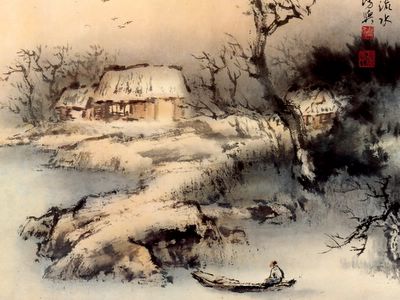
se·nes·cence Pronunciation: si-'ne-s&n(t)s noun; senescent, from Latin senescent-, senescens, present participle of senescere to grow old, from sen-, senex old
1 : the state of being old : the process of becoming old
2 : the growth phase in a plant or plant part (as a leaf) from full maturity to death
Layman Pang (740-808) was the most famous lay Buddhist in Chinese Zen history (Ferguson, 2000). He came from Hengyang in southern Hunan Province. Layman Pang studied and attained great realization under both of the great teachers of his era, Shitou and Mazu.
Layman Pang met Zen master Shitou in the year 785. He asked him, "Who is the one who is not a companion to the ten thousand dharmas?" Shitou quickly covered Pang's mouth with his hand. The Layman suddenly had a realization.
One day, Shitou asked, "What have you been doing each day since we last saw one another?" Layman Pang said, "If you ask about daily affairs, then nothing can be said." The Layman then recited the verse whose last two lines are widely quoted:
How miraculous and wondrous,
Hauling water and carrying firewood.
Later, upon meeting Mazu, Layman Pang asked again, "Who is the one who is not a companion to the ten thousand dharmas?" Mazu said, "When you swallow all of the water in the West River in one gulp, then I'll tell you." Hearing these words, Layman Pang fully realized the mystery. He then stayed and practiced under Mazu for two years. He wrote a verse that said:
A man unmarried,
A woman unbetrothed,
Happily they are brought together,
They both speak without saying words.
Source: Ferguson, Andrew, 2000, Zen's Chinese Heritage, The Masters and Their Teachings; Wisdom Publications, Boston

No comments:
Post a Comment